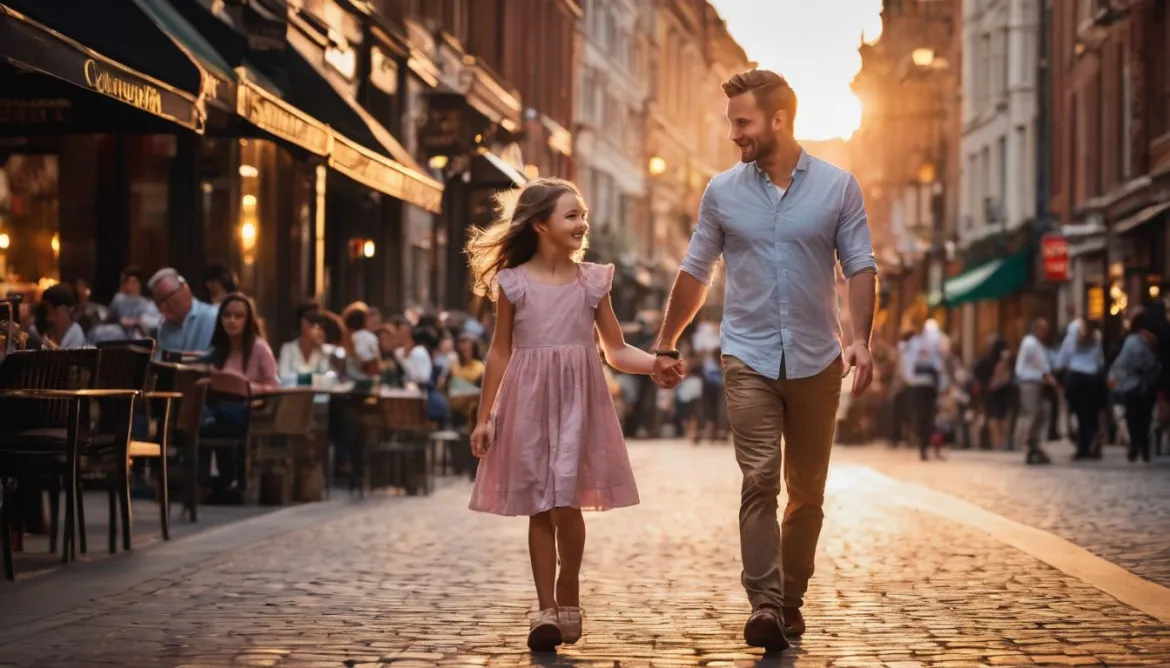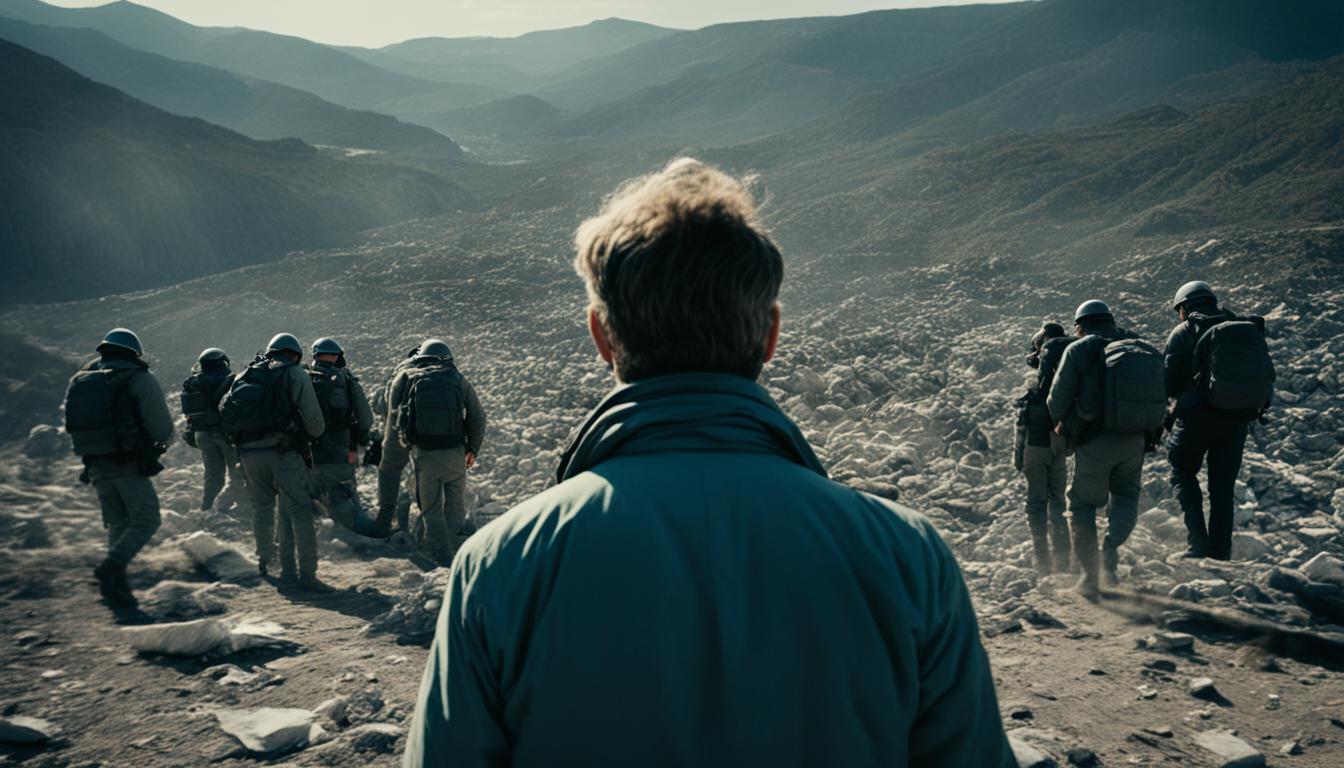Welcome to our article on authentic post-processing in documentary photography. In this section, we will explore the importance of maintaining authenticity while editing documentary photographs. Post-processing is an integral part of the documentary photography process, allowing photographers to enhance their images while staying true to the original story being told.
Some may argue that true photography should be left untouched, but throughout the history of the medium, post-processing has always played a role. It enables photographers to capture the light and details that the camera may not fully capture, resulting in more impactful and visually appealing images.
In documentary photography, maintaining authenticity is crucial. Post-processing should be limited to enhancing the contrast, colors, and conducting simple retouching to reflect what the human eye sees. The goal is not to manipulate or alter the reality of the scene but to present it in the most accurate and visually engaging way possible.
Key Takeaways:
- Post-processing is an essential part of documentary photography, allowing photographers to enhance their images while maintaining authenticity.
- Through post-processing, photographers can capture the light and details that the camera may not fully capture.
- In documentary photography, post-processing should be limited to enhancing contrast, colors, and simple retouching to reflect what the human eye sees.
- The goal of post-processing in documentary photography is to present the scene in the most accurate and visually engaging way possible.
- Authentic post-processing enhances the impact and storytelling power of documentary photographs.
Understanding the Importance of Post-Processing in Photography
Post-processing plays a crucial role in photography by allowing us to enhance our images and preserve the visual integrity of the subject. While some photographers argue that post-processing manipulates the image, our goal is to accurately represent what the human eye sees and overcome the limitations of the camera.
“Post-processing is like polishing your photos, bringing out their hidden beauty and potential.”
Photo retouching techniques are essential in this process. By enhancing contrast and colors, we can bring out the details and capture the essence of the subject, resulting in more impactful documentary photos. Post-processing, when used ethically, can help maintain the authenticity of the story being told.
Preserving Visual Integrity
Preserving the visual integrity of a photograph is crucial in documentary photography. It ensures that the image accurately represents the scene and the emotions felt in that moment. Post-processing techniques should complement the original intention of the photographer and not distort the reality being documented.
In order to preserve the visual integrity, it’s important to use post-processing techniques that enhance the elements already present in the image. This may include adjusting exposure levels to capture more details in shadows and highlights, enhancing colors to reflect the true ambiance of the scene, or sharpening the image to bring out finer details.
Enhancing Documentary Photos
Documentary photos, at their core, aim to tell a story and evoke emotions. Post-processing allows us to enhance these photos, making them more powerful and impactful. By carefully applying retouching techniques, we can capture the true essence of the subject and convey the intended message to the viewer.
“Post-processing should be seen as a tool to enhance the message of the photograph, not to alter its truth.”
For example, in a documentary photo of a crowded street, enhancing the contrast and adjusting the colors can help bring attention to the expressions and actions of the people, highlighting the energy and chaos of the scene. These enhancements serve to emphasize the narrative behind the photograph.
To illustrate the power of post-processing in enhancing documentary photos, take a look at the example below:
In this example, the post-processed version brings out the colors and contrast, resulting in a more visually compelling image that effectively tells its story. By preserving the visual integrity and enhancing certain aspects of the photograph, post-processing can create a more immersive and impactful experience for the viewer.
In Summary
Understanding the importance of post-processing in photography is crucial for any documentary photographer. It allows us to enhance our images, preserve the visual integrity of the subject, and convey the intended message more effectively. By utilizing photo retouching techniques ethically, we can create documentary photos that capture the essence of the story being told while maintaining the authenticity of the scene.
Different Approaches to Post-Processing in Documentary Photography
When it comes to post-processing in documentary photography, there are various approaches that photographers take. While some believe in minimal editing to maintain the originality and authenticity of the image, others may opt for more extensive adjustments to enhance the visual impact. Ultimately, the goal is to strike a balance between ethical photo editing and preserving the integrity of the captured moment.
Ethical photo editing is a fundamental principle in documentary photography. It emphasizes the importance of accurately representing the reality and truth of the subjects and their stories. By adhering to ethical standards, photographers uphold the integrity of the genre and establish trust with their audience.
Photo Editing Workflow
A well-defined photo editing workflow is essential in documentary photography to ensure consistency and efficiency while maintaining the narrative’s originality. This workflow includes specific steps for organizing, selecting, and processing images in a way that respects the story being told.
Here is an example of a typical photo editing workflow in documentary photography:
- Image selection: Carefully review and select the strongest images that best convey the story.
- Basic adjustments: Make minor adjustments to exposure, contrast, and white balance to achieve a natural and balanced look.
- Storytelling enhancements: Apply adjustments that enhance the visual impact and emphasize the narrative without altering its authenticity.
- Retouching: Address minimal distractions or imperfections that may draw attention away from the subject.
- Final review: Evaluate the edited images to ensure they maintain the integrity and originality of the story.
This workflow, or a variation of it, helps photographers maintain their originality in photo editing and ensure that the final images accurately represent the real-life moments they document.
In documentary photography, our aim is to be faithful to the truth and maintain the authenticity of the captured moments. By following a well-defined photo editing workflow and embracing ethical photo editing practices, we uphold the essence of the stories we tell.

| Approach | Advantages | Disadvantages |
|---|---|---|
| Minimal Editing | Preserves the authenticity of the moment Maintains the integrity of the genre Builds trust with the audience |
May limit the visual impact of the image Requires careful selection of well-composed and well-exposed photographs |
| Extensive Adjustments | Allows for enhanced visual impact Can emphasize the narrative Provides creative freedom |
Potential risk of altering the authenticity of the moment May raise questions about credibility and truthfulness |
The Role of Post-Processing in Landscape Photography
In landscape photography, post-processing plays a vital role in enhancing the beauty and visual impact of the captured scenery. It allows photographers to manipulate the image to create their desired aesthetic, turning a simple landscape into a stunning masterpiece. While some may argue that post-processing alters the authenticity of the photograph, it is important to remember that landscape photography falls more into the artistic side of the medium, where creativity and personal expression are encouraged.
Landscape photographers employ various photo editing techniques to enhance their images and bring out the true essence of the landscape. One common technique is adjusting colors to create a more vibrant and captivating scene. By enhancing the hues of the sky, foliage, and water, photographers can evoke a sense of awe and create a visual experience that is even more impactful than the actual scene.
Another essential aspect of landscape photography post-processing is manipulating tones and contrast. This technique allows photographers to emphasize certain areas of the image, adding depth and dimension to the landscape. By enhancing the highlights and shadows, photographers can create a more dynamic and dramatic composition that draws the viewer’s attention.
“Post-processing in landscape photography allows us to transform a beautiful landscape into a breathtaking work of art, showcasing our unique vision and interpretation of the scene.” – Landscape Photography Enthusiast
Composition is another crucial element that can be enhanced during the post-processing stage. Through cropping, photographers can remove distracting elements and create a more balanced and visually pleasing composition. They can also adjust the overall composition by using tools like the rule of thirds and leading lines, which guide the viewer’s eye and create a stronger visual narrative.
To further demonstrate the role of post-processing in landscape photography, here is an example of a before-and-after image:
| Before | After |
|---|---|
As demonstrated in the example above, post-processing can significantly enhance the visual appeal of a landscape photograph. Through strategic adjustments and enhancements, photographers have the power to bring out the true beauty of the scene and create an emotional connection with their audience.
Historical Examples of Documentary Photography
Documentary photography has a rich history, with famous photographers who have made significant contributions to the medium. Their work has not only captured important moments in history, but also inspired social change and shed light on pressing social issues.
One notable documentary photographer is Joseph Riis. Born in 1849, Riis used his camera to expose the harsh reality of slum life in New York City during the late 19th and early 20th centuries. His groundbreaking book, “How the Other Half Lives,” brought attention to the living conditions of the urban poor and sparked calls for social reform.
“The slum is the measure of civilization.”
Dorothea Lange is another influential documentary photographer who made a significant impact with her work. Best known for her iconic photograph “Migrant Mother,” taken during the Great Depression, Lange documented the struggles faced by migrant workers and their families. Her photographs humanized the economic hardship of the era and played a crucial role in raising awareness and advocating for government assistance for those in need.
“Photography takes an instant out of time, altering life by holding it still.”
Henri Cartier-Bresson, often referred to as the father of modern photojournalism, also made important contributions to documentary photography. His candid and spontaneous approach captured decisive moments and telling expressions, providing a unique perspective on the human condition. Cartier-Bresson’s photographs documented pivotal events such as the Spanish Civil War, the liberation of Paris, and the aftermath of World War II, creating a visual narrative of the 20th century.
“To photograph is to hold one’s breath when all faculties converge to capture fleeting reality. It’s at that precise moment that mastering an image becomes a great physical and intellectual joy.”
These famous documentary photographers not only left an indelible mark on the history of photography but also on society as a whole. Their images continue to serve as powerful reminders of the past and as catalysts for change.

Different Styles of Documentary Photography
In the realm of documentary photography, there are various styles that photographers employ to capture the essence of their subjects. Each style serves a unique purpose and focuses on specific aspects of the human experience and the world we inhabit. Let’s explore some of the most prominent styles:
Social Documentary Photography
Social documentary photography aims to shed light on social issues and provoke change. Through powerful images, social documentary photographers strive to raise awareness, evoke empathy, and inspire action. By capturing the realities of marginalized communities, social inequality, and pressing social issues, these photographers spark conversations and challenge the status quo.
War Documentary Photography
War documentary photography provides a firsthand account of the impact of conflict on individuals and societies. These photographers brave dangerous conditions to capture the raw emotions, devastation, and resilience that arise in the midst of war. By documenting the realities of war, they give voice to those affected, humanize the consequences, and contribute to a broader understanding of the human cost of conflict.
Conservation Photography
Conservation photography focuses on environmental issues, emphasizing the need to protect and preserve our natural world. These photographers use their art to heighten awareness about threatened ecosystems, endangered species, and the consequences of human actions on the environment. Through compelling images, they aim to inspire individuals and communities to take action and make a positive impact on the planet.
Ethnographic Photography
Ethnographic photography explores different cultures and societies, capturing the diversity of human experiences. These photographers delve into the traditions, customs, rituals, and everyday lives of different communities, shedding light on the richness and complexity of human existence. Their images provide insights into cultures, foster cross-cultural understanding, and celebrate the beauty of diversity.
These different styles of documentary photography exemplify the power of the art form to inform, educate, and ignite change. By employing various approaches, photographers can expose social issues, tell compelling stories, and create visual records that contribute to our collective understanding of the world.
Whether it is social documentary, war documentary, conservation photography, or ethnographic photography, each style offers a distinct perspective on our shared human experience. Through their lenses, documentary photographers become storytellers, capturing the essence of the world and inspiring us to engage with the issues that shape our lives.
Tips for Successful Documentary Photography
When it comes to becoming a documentary photographer, mastering the fundamentals of photography is crucial. Understanding lighting, composition, and the art of capturing moments as they happen are essential skills that will help you tell compelling visual stories.
To ensure success in documentary photography, here are some valuable tips to keep in mind:
- Be open and ready: Documentary moments can occur spontaneously, so it’s important to always be prepared. Stay alert and keep your camera accessible to capture those unexpected, authentic moments that define the essence of your story.
- Practice good people skills: Building rapport with your subjects is key. Take the time to connect with them, gain their trust, and make them feel comfortable in front of the camera. This will allow you to capture more genuine and intimate moments.
- Make a commitment: Documentary photography often involves long-term projects and storytelling. Immerse yourself in the subject matter and show dedication to fully capturing the narrative. Stay engaged, revisit your subjects, and follow the story wherever it leads.
- Organize and protect your work: As a documentary photographer, you’ll amass a significant collection of images. It’s crucial to keep your work organized, both in terms of digital file management and physical prints. Consider using metadata and backup systems to ensure your images are safe and easily accessible.
“Documentary photography is more than just capturing images; it’s about telling stories that matter. With these tips, you’ll be well on your way to becoming a successful documentary photographer, creating a visual record that resonates with viewers and contributes to the collective understanding of the world.”
Remember, documentary photography is a powerful medium through which you can document social issues, share unique perspectives, and elicit emotional responses. By honing your skills, building meaningful connections, and committing to telling impactful stories, you have the potential to make a lasting impact in the field.
Conclusion
Documentary photography is a powerful medium that allows us to capture the authenticity and realness of the world around us. Through the lens of a camera, we are able to document significant moments, tell meaningful stories, and contribute to the historical record.
Post-processing plays a crucial role in maintaining the authenticity of documentary photographs while enhancing their visual impact. By making careful adjustments to contrast, colors, and simple retouching, we can bring out the true essence of the subject and accurately represent what our eyes see. It is essential that we use post-processing tools ethically, ensuring that we preserve the integrity of the story we are telling.
Whether we are engaging in social documentary, war documentary, or conservation photography, we have a responsibility to shed light on important issues and inspire change. By following the tips and techniques mentioned in this article, we can create compelling documentary photographs that resonate with audiences, ignite conversations, and contribute to a better understanding of the world we live in. Documentary photography has the power to move people, evoke emotions, and challenge societal norms. Let us continue to capture the world as it is, and through our lens, make a lasting impact.
FAQ
Is post-processing necessary in documentary photography?
Yes, post-processing is essential in documentary photography to enhance the visual impact and capture details that may not be fully captured by the camera.
How can post-processing maintain the authenticity of documentary photographs?
Post-processing should be limited to enhancing contrast, colors, and simple retouching to reflect what the human eye sees, preserving the authenticity of the story being told.
What is ethical photo editing in documentary photography?
Ethical photo editing in documentary photography involves making minimal adjustments that do not alter the authenticity of the image or the story being told.
What is the role of post-processing in landscape photography?
In landscape photography, post-processing allows photographers to manipulate the image to create their desired aesthetic and enhance the beauty of the landscape.
Can you provide examples of famous documentary photographers?
Some famous documentary photographers include Joseph Riis, Dorthea Lange, and Henri Cartier-Bresson, who have made significant contributions to the medium.
What are the different styles of documentary photography?
The different styles of documentary photography include social documentary, war documentary, conservation photography, and ethnographic photography.
What are some tips for successful documentary photography?
Some tips for successful documentary photography include mastering the fundamentals of photography, being open to capturing spontaneous moments, and committing to your subjects.
How Does Understanding the Principles and History of Documentary Photography Impact Authentic Post-Processing Techniques?
Understanding documentary photography principles is crucial for authentic post-processing techniques. By exploring documentary photography principles and history, photographers can grasp the original intentions and styles of the genre. This understanding can greatly impact the way they edit and process their images, maintaining the authenticity of the captured moment.




